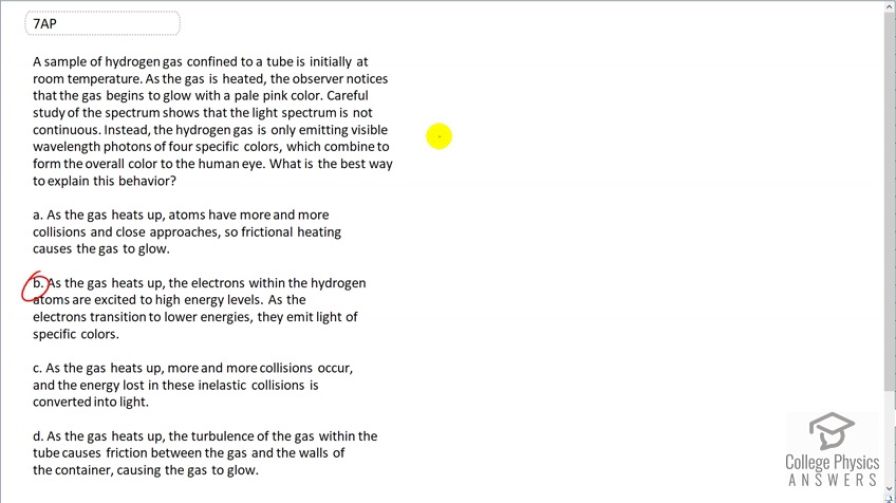Question
A sample of hydrogen gas confined to a tube is initially at room temperature. As the gas is heated, the observer notices that the gas begins to glow with a pale pink color. Careful study of the spectrum shows that the light spectrum is not continuous. Instead, the hydrogen gas is only emitting visible wavelength photons of four specific colors, which combine to form the overall color to the human eye. What is the best way to explain this behavior?
- As the gas heats up, atoms have more and more collisions and close approaches, so frictional heating causes the gas to glow.
- As the gas heats up, the electrons within the hydrogen atoms are excited to high energy levels. As the electrons transition to lower energies, they emit light of specific colors.
- As the gas heats up, more and more collisions occur, and the energy lost in these inelastic collisions is converted into light.
- As the gas heats up, the turbulence of the gas within the tube causes friction between the gas and the walls of the container, causing the gas to glow.
Final Answer
(a)
Solution video
OpenStax College Physics for AP® Courses, Chapter 30, Problem 7 (Test Prep for AP® Courses)

vote with a rating of
votes with an average rating of
.
Video Transcript
This is College Physics Answers with Shaun Dychko. Distinct wavelength photons are emitted by this excited hydrogen gas and that's explained by a different color photon being emitted by each energy transition in the hydrogen atom. And so the answer to this is part (b). So as the gas heats up, electrons get excited to higher energy levels and as they transition to lower energy levels, they emit a photon with an energy equal to the difference in levels that the electron transitioned between.